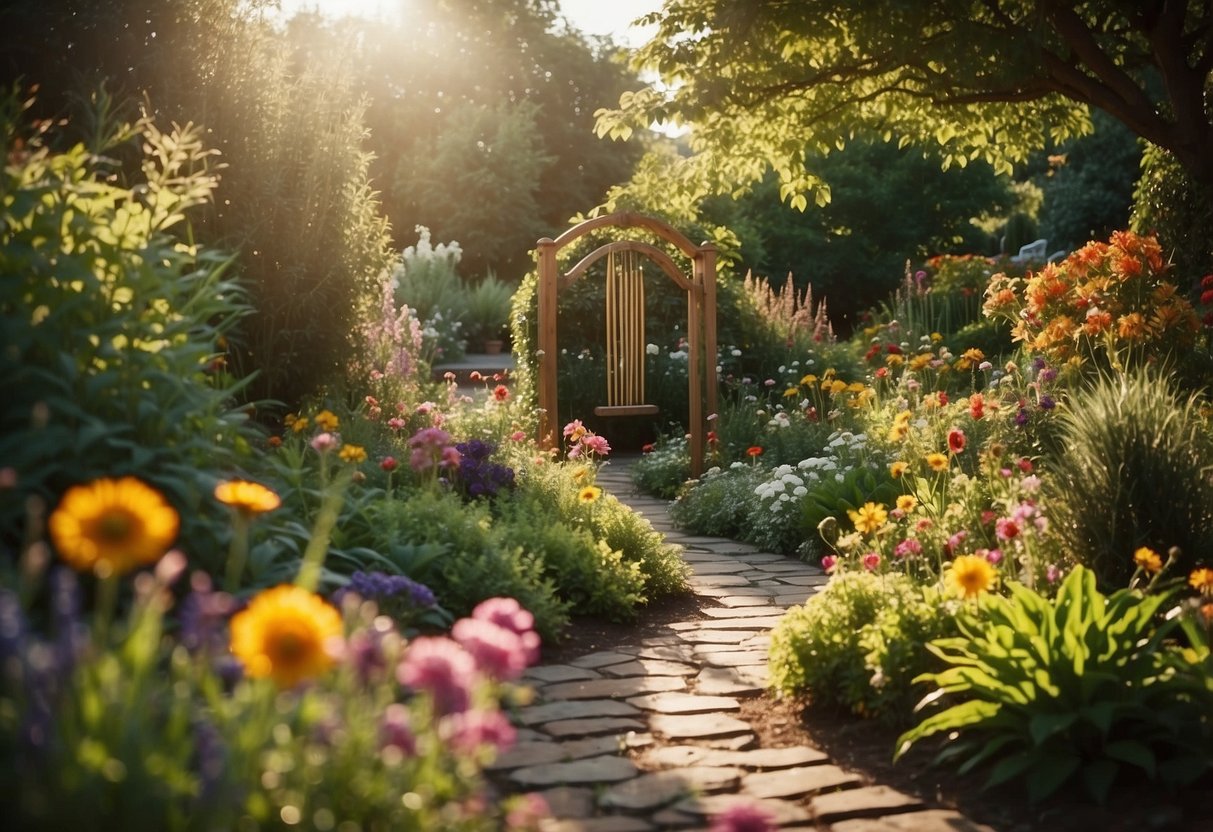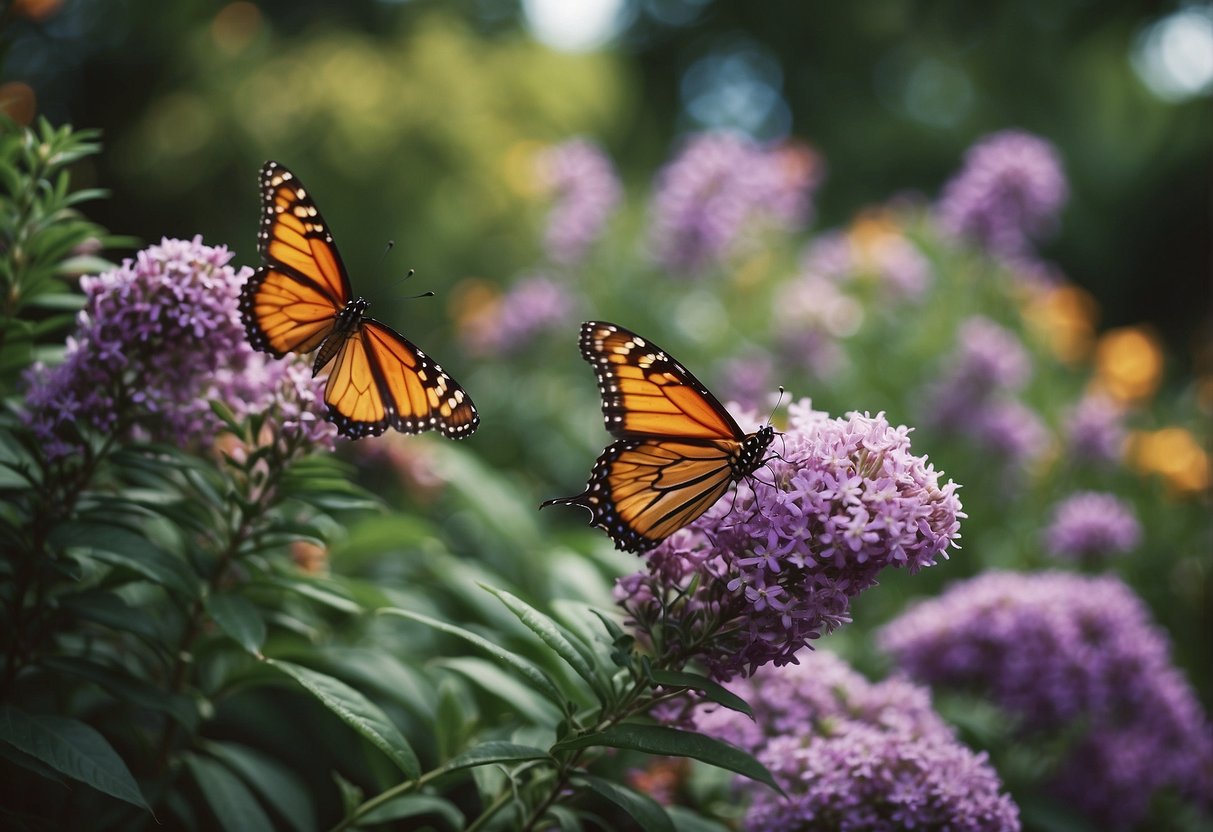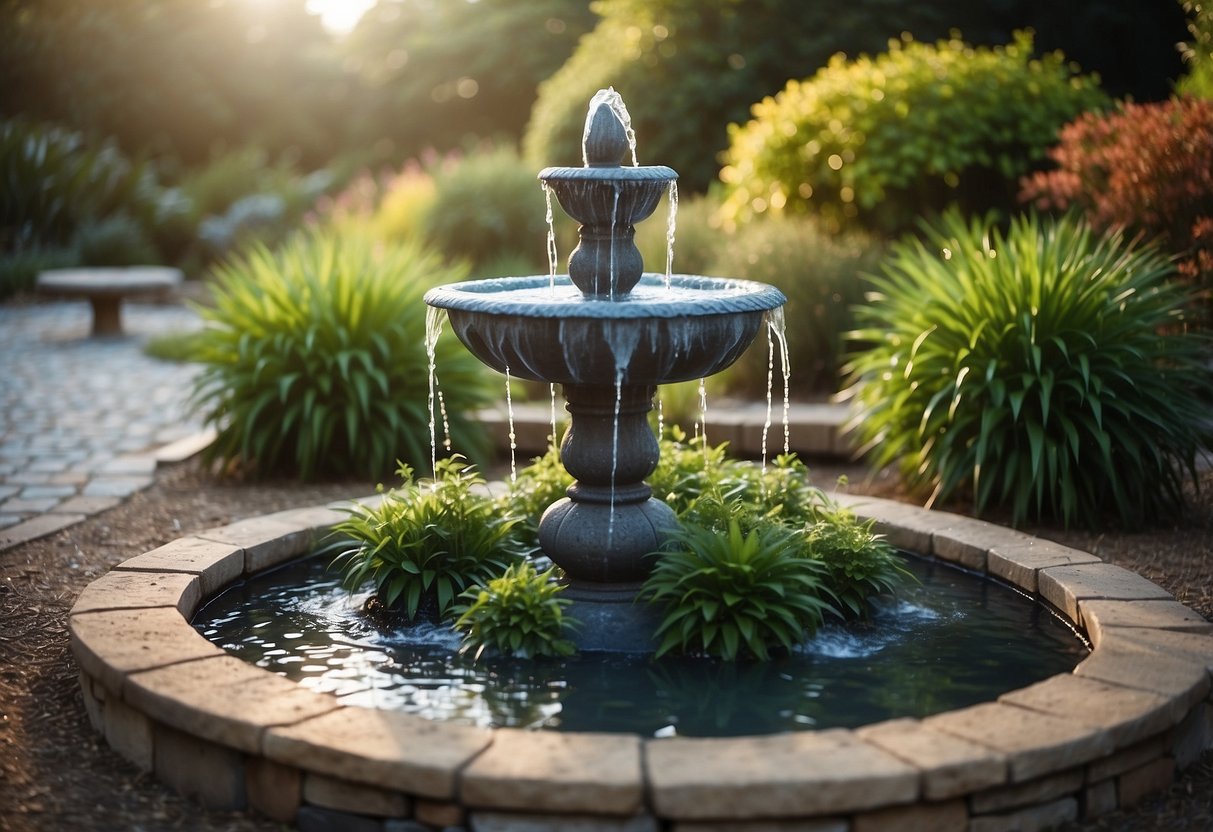Sensory Garden Ideas: Fun and Creative Tips for Your Backyard
Creating a garden that stimulates all your senses can be both a fun and therapeutic experience. Sensory gardens are designed to engage sight, sound, smell, touch, and taste, providing a rich and immersive environment. Whether you have a large backyard or a small balcony, you can create a sensory space that suits your needs.

Why set up a sensory garden? It’s a wonderful way to enjoy nature while also crafting a peaceful retreat right near your home. Besides offering a visually pleasing space, it can also be beneficial for your well-being, making you feel more connected and relaxed.
1) Aromatic Lavender Pathway

Creating a lavender pathway can transform your garden into a fragrant retreat. Lavender not only smells wonderful but also adds a burst of color.
Line your pathway with varieties like Hidcote or Munstead lavender. These types are known for their beautiful purple blooms.
Lavender thrives in well-drained soil and full sun. Ensure your pathway area gets at least six hours of sunlight daily.
Every step along your lavender pathway will release a pleasant scent, making your garden walks more enjoyable. For more tips, check out this guide on landscaping with lavender.
2) Wind Chime Corner

Setting up a Wind Chime Corner in your sensory garden can create a relaxing and peaceful atmosphere. Wind chimes bring gentle, melodic sounds that can soothe the mind.
Choose wind chimes made from different materials like wood, metal, or mixed media. Each type produces a unique sound.
Hang the wind chimes where they can catch the wind easily. A spot near a seating area can make it a favorite place to relax and enjoy the garden.
Wind chimes also add a visual element with their movement and design. This makes your garden both visually and audibly delightful.
For more ideas, check out sensory garden ideas.
3) Textured Stepping Stones

Adding textured stepping stones to your garden path can be both functional and fun. They help create a unique walking experience.
Use materials like porous limestone or sandstone to encourage moss growth. You can even create your own stepping stones for a personal touch.
Mixing different textures reduces the risk of slipping and makes your garden more engaging. The varied surfaces provide sensory stimulation, inviting exploration and discovery.
4) Colorful Butterfly Bushes

Butterfly bushes are a great choice for adding color and attracting butterflies to your garden. They come in a range of colors, including purple, blue, and white. These plants are easy to care for and can grow quite tall, making them a standout feature.
One popular variety is the Black Knight butterfly bush. It features dark purple to nearly black blooms. You can plant butterfly bushes in full sun to partial shade, and they prefer well-drained soil.
Adding a butterfly bush to your sensory garden will not only bring vibrant colors but also invite beautiful butterflies to enjoy.
5) Therapeutic Herb Garden

A therapeutic herb garden can enhance your well-being. It combines a variety of herbs that engage the senses, providing a calming environment.
Include herbs like lavender for its soothing scent. Plant basil and mint for their refreshing aromas and flavors.
Consider adding rosemary for its invigorating scent and visual appeal. These herbs not only stimulate your senses but also offer therapeutic benefits.
6) Scented Rose Tunnel

Imagine walking through a tunnel of roses. The fragrance fills the air around you. This is what a scented rose tunnel offers.
You can create your tunnel with climbing roses. Choose varieties known for their strong scent. Some great options include ‘Graham Thomas’ or ‘Constance Spry’.
Install an arch or a series of arches to support the roses. As they grow, they will cover the structure, creating a magical pathway.
7) Interactive Water Feature

Adding an interactive water feature to your sensory garden can be both fun and refreshing. A small fountain or pond can invite you to dip your hands or feet in, cooling off on a warm day.
Water features often attract wildlife like birds and dragonflies. Watching them visit adds an extra layer of enjoyment to your garden. The soothing sound of water trickling can also make the space feel more relaxing.
Consider using solar-powered features to keep things eco-friendly. They are easy to install and maintain, making them a great addition to your outdoor experience.
8) Soft Mossy Walkway

Imagine walking on a pathway covered in soft, green moss. It feels cushiony under your feet, almost like a natural carpet. This can make your garden more inviting and peaceful.
A mossy walkway can be created by choosing shady spots and keeping the soil moist. The rich texture of moss provides a unique sensory experience that enhances the garden’s tranquil feel.
For best results, choose moss types that thrive in your local climate. Adding this feature to your garden can bring calm and joy every time you step outside.
9) Rustling Bamboo Thicket

Imagine walking through your garden and hearing the soothing rustle of bamboo leaves. A bamboo thicket can turn your garden into a peaceful retreat. The gentle swaying of tall bamboo creates a natural sound, almost like music, which can help you relax.
Bamboo is not only beautiful but also very durable. It grows quickly, providing you with a lush, green barrier in no time. The variety of bamboo plants available can suit different garden sizes and styles. Consider adding a bamboo thicket to create a calming atmosphere in your sensory garden.
10) Sunflower Maze

Creating a sunflower maze is a fun way to engage all your senses. Choose a clear, open area to give your sunflowers plenty of space to grow.
Draw your maze design on paper first. Paths should be about 3 feet wide. Mark your maze layout on the ground using flour.
Plant sunflower seeds along the flour lines, spacing them about 6 inches apart. Watch as your maze grows tall and creates natural walls.
Keep the paths clear by weeding regularly. Your sunflower maze will be a delightful, immersive experience for everyone.
For more tips, visit growing a sunflower maze.
Benefits of Sensory Gardens

Sensory gardens offer multiple benefits, including enhancing emotional well-being, boosting cognitive functions, and promoting physical health. Engaging with such gardens can be a serene escape and a practical way to improve various aspects of your life.
Emotional Well-Being
A sensory garden can lift your spirits and calm your mind. These spaces are designed to be peaceful, making them perfect for meditation or yoga. Imagine sitting among fragrant flowers, listening to soothing water sounds, and feeling the breeze on your skin. These moments can lower stress levels and make you feel more connected with nature and your surroundings.
Studies show that nature exposure can reduce anxiety and depression. A sensory garden, with its blend of scents, textures, and sights, can enhance these positive effects. You can use plants like lavender and chamomile for their calming properties.
Creating a sensory garden can also foster a sense of accomplishment. As you care for the plants and watch them grow, you’ll likely feel more positive and fulfilled.
Cognitive Improvement
Sensory gardens can sharpen your mind by keeping it active and engaged. They encourage you to use all five senses, which can help improve memory and learning. When you touch different textures and smell various scents, your brain creates new connections and recalls past experiences.
Such gardens are especially beneficial for children and older adults. For kids, they can be a fun way to learn about nature and science. For the elderly, interacting with plants can help maintain cognitive abilities. You might plant herbs like rosemary and mint which are known to boost memory.
You’ll also find sensory gardens useful if you’re working on a creative project. Spending time in these gardens can stimulate your imagination and lead to new ideas.
Physical Health
Sensory gardens can also benefit your body. Gardening itself is a low-impact exercise that can improve flexibility, strength, and coordination. Tasks like planting, weeding, and watering get you moving and can help you stay fit.
These gardens can also encourage healthy eating if you include edible plants. Growing your own herbs, vegetables, and fruits means you always have fresh, nutritious food on hand. Try integrating plants like basil, tomatoes, and strawberries to enjoy straight from your garden.
Fresh air and sunlight in a sensory garden can also boost your vitamin D levels, which are important for bone health. Sunlight exposure can regulate your sleep patterns, helping you rest better at night.
Designing Your Sensory Garden

Creating a sensory garden involves blending various elements that engage your senses. You’ll want to choose plants that appeal to sight, smell, touch, taste, and sound, ensure easy access, and possibly incorporate some water features for calmness.
Choosing Plants for Different Senses
To make your garden engaging, you should select plants that stimulate various senses. For sight, choose colorful blooms like sunflowers and marigolds. Smell can be enhanced with fragrant herbs such as lavender, mint, and rosemary.
For touch, incorporate plants with different textures like soft lamb’s ear or feathery ferns. Taste can be addressed with edible plants such as basil, strawberries, and chocolate mint, creating a delightful garden-to-table experience. Finally, for sound, grasses that rustle in the wind or seed pods that rattle add an auditory dimension.
Creating Accessible Paths
Accessible paths are crucial for making your sensory garden enjoyable for everyone. Use wide paths that can accommodate wheelchairs and strollers. Choose materials like gravel, flagstone, or mulch for a tactile experience underfoot.
Consider creating raised beds for easier access to plants. Raised beds can be made from wood, stone, or metal and should be at a comfortable height. Ensure there are seating areas along the paths where you can rest and enjoy the surroundings. Paths should also be clearly marked and free of obstacles to allow for safe navigation.
Incorporating Water Features
Water features add a soothing element to your sensory garden. A small pond can become the focal point while attracting wildlife like birds and frogs. Fountains or bubblers provide the calming sound of trickling water, which is relaxing and peaceful.
Water features can also include streams or even a simple birdbath. They do not need to be elaborate but should be safe and easy to maintain. Placing water features near seating areas allows you to enjoy the sound and sight of water while taking a break. Make sure they are accessible and situated in a way that blends naturally with the rest of the garden.







